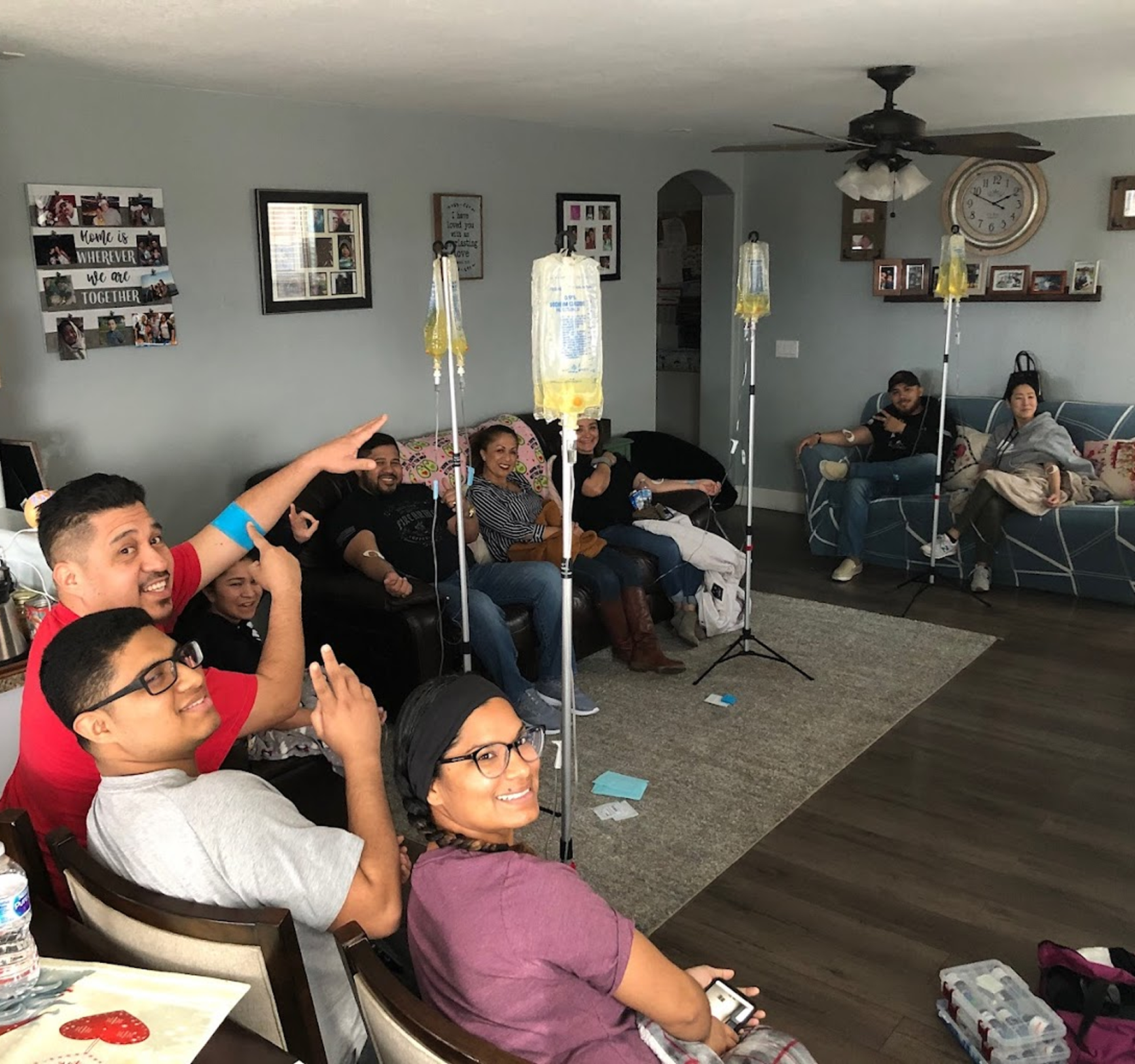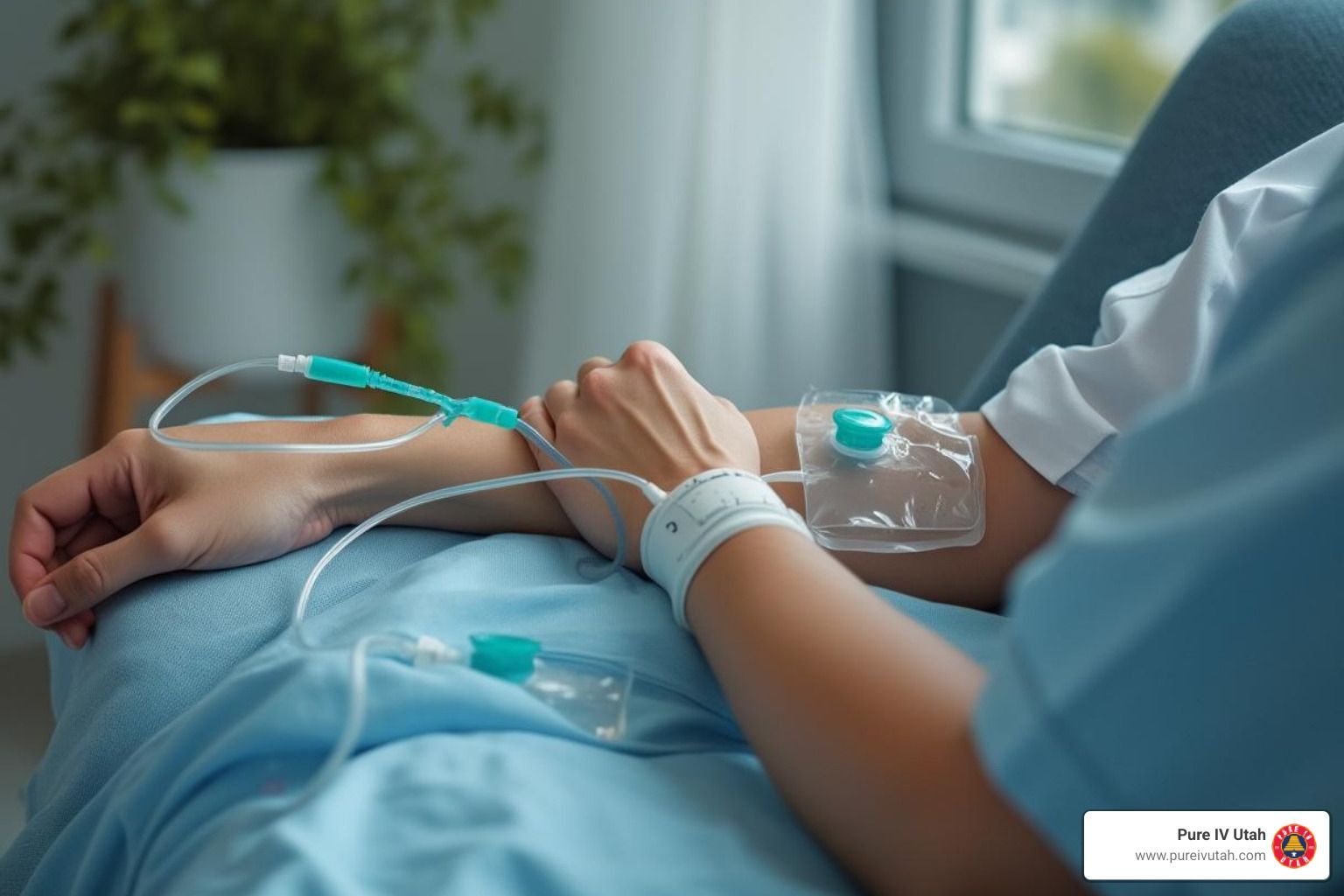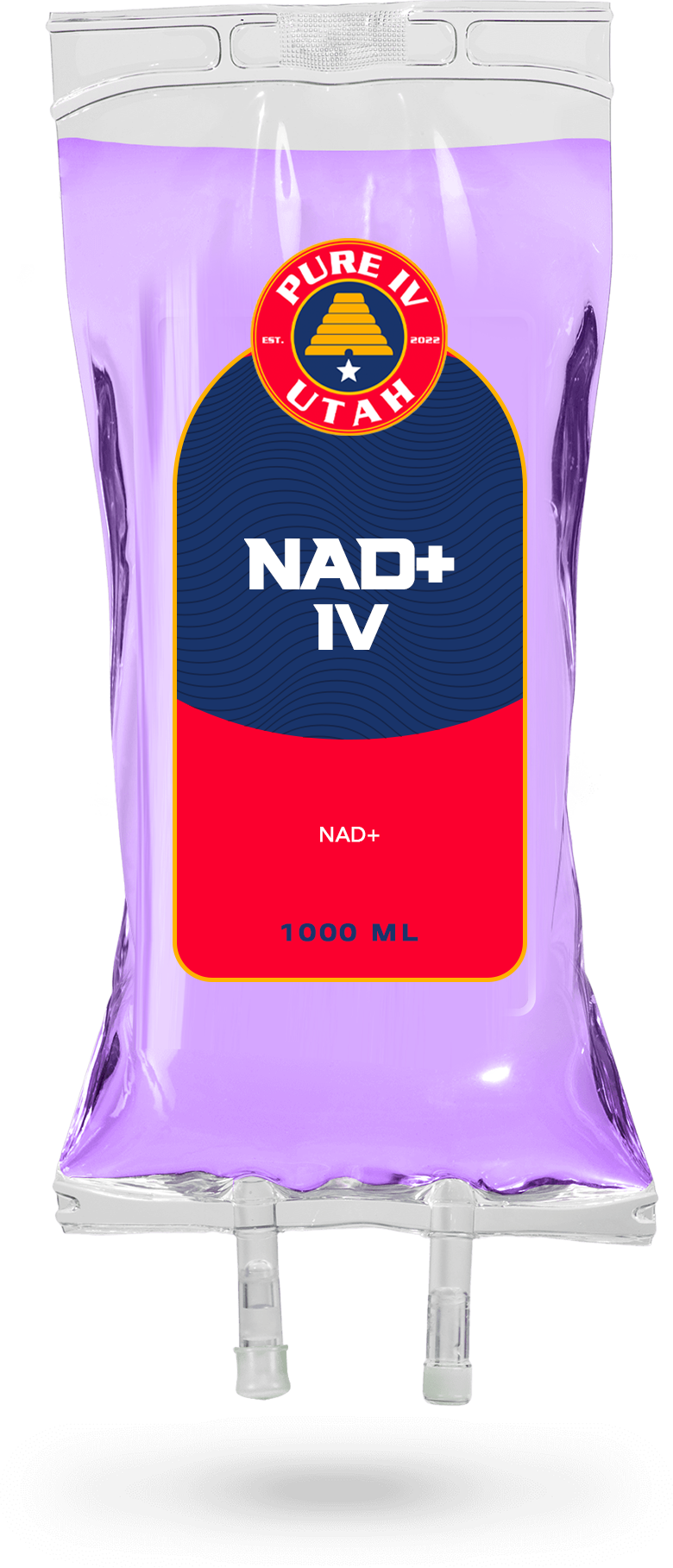Custom Vitamin IV Bags for Energy, Hydration, and Fast Recovery

Medically reviewed by Micaela Strevay, FNP-C, PMHNP-BC
Joseph Lopez • June 3, 2025
Table of Contents

Custom Vitamin IV therapy revolutionizes wellness with personalized infusions designed to restore, rehydrate, and revitalize the body. With improved bioavailability, faster absorption, and tailored nutrient blends, custom IV bags are a preferred option for supporting energy, immune system function, and overall nutrition.
Key Takeaways
Custom Vitamin IV Bags deliver nutrients directly into the bloodstream, enhancing energy and immune support.
Critical ingredients include vitamins, minerals, amino acids, and antioxidants to aid recovery and overall wellness.
A reputable provider, proper preparation, and post-session monitoring are essential for safety and effectiveness.
Understand the Benefits of Custom Vitamin IV Bags for Your Health
Custom Vitamin IV Bags deliver essential nutrients directly into the bloodstream, ensuring 100% absorption. This method benefits those with gastrointestinal issues or nutrient deficiencies by providing immediate action and effective rehydration.
Identify the Key Health Advantages of Vitamin IV Therapy
IV therapy combats fatigue, boosts metabolism, and replenishes electrolytes like sodium and potassium. It rapidly rehydrates the body while replenishing B vitamins and vitamin C to support immune responses and relieve stress and hangover symptoms. This method can significantly reduce recovery times for active individuals and athletes.
Learn How Vitamins Boost Your Immune System and Energy Levels
Infusing vitamins such as B12 and C helps counter oxidative stress and inflammation, fueling energy metabolism and immune cell function. Users often experience increased energy and improved resilience against common stressors, with some reports of noticeable energy boosts shortly after the infusion.
Explore Hydration and Recovery Benefits From IV Infusions
Hydration is crucial to recovery. Custom IV solutions combine essential fluids with vitamins and electrolytes like sodium, potassium, and magnesium to enhance tissue repair and reduce dehydration symptoms such as headaches or nausea. Athletes find that timely hydration protocols improve workout recovery and overall performance.
Examine the Impact of Customized Formulas on Wellness
A tailored IV formula is developed from an individual’s health history, nutrient deficiencies, and wellness goals. Whether the aim is weight loss, improved skin nutrition, or enhanced immunity, these custom blends address chronic fatigue and micronutrient imbalances more effectively than generic treatments.
Determine the Essential Ingredients for Crafting Your Drip
Creating the ideal vitamin IV bag involves a careful balance of vitamins, minerals, hydration components, amino acids, and antioxidants. Each ingredient is selected to work synergistically to boost overall health.
Assess Popular Vitamins and Minerals to Include
Key components typically include vitamins B12, C, and D, along with minerals like magnesium, zinc, and calcium. Vitamin B12 may help restore energy and support brain function, while magnesium reduces muscle cramps and fatigue. This balanced mix supports multiple bodily functions and enhances vitality.
Evaluate the Significance of Hydration Components
Electrolytes such as sodium, potassium, and chloride maintain fluid balance, nerve function, and muscle activity. A balanced saline solution included in the IV infusion not only prevents dehydration but also aids in the effective absorption of dissolved nutrients.
Review How Amino Acids Enhance Recovery and Performance
Amino acids like L-carnitine, taurine, and glutamine are vital for protein synthesis and muscle repair. L-carnitine, in particular, supports fat metabolism and energy production, helping reduce muscle soreness and improve recovery speed.
Consider Antioxidants' Roles in Overall Health
Antioxidants such as glutathione and vitamin C protect cells from oxidative stress and inflammation. Glutathione supports cellular repair and detoxification, further enhancing the body’s resilience against environmental toxins and metabolic stress.
Choose the Right Provider for Custom Vitamin IV Solutions
Selecting a provider for custom vitamin IV treatments is as important as the formulation itself. Certified professionals ensure that treatments meet high safety and quality standards.
Research Certified Clinics and Their Professional Credentials
Providers should employ registered nurses and board-certified physicians and maintain certification from reputable health organizations such as the FDA. Strict sterilization protocols help guarantee safe and effective treatments.
Compare Patient Reviews and Testimonials for Quality Insights
Patient testimonials and reviews provide insights into a clinic’s service quality and treatment success. Positive feedback regarding professionalism and tangible health improvements is a good indicator of a clinic’s reliability.
Examine the Range of Services Offered by Different Providers
Many providers offer both in-clinic and mobile IV therapy services, ensuring convenience and personalized care. A varied service menu demonstrates a provider’s commitment to meeting individual wellness needs.
Inquire About Safety Measures and Ingredient Sourcing
Patients should ask about sterilization practices, quality checks, and the sourcing of pharmaceutical-grade ingredients. Transparency in these areas reinforces the provider’s commitment to patient safety.
Understand the Customization Process for Your IV Bag
Custom IV therapy begins with an in-depth consultation to assess health needs and tailor a precise nutrient blend. This process typically includes diagnostic tests and discussions about lifestyle and wellness goals.
Discover How to Assess Personal Health Goals and Needs
Patients often undergo blood tests and consultations with a registered nurse to determine nutrient deficiencies and health targets—whether it’s reducing fatigue or improving skin health.
Review the Consultation Process With Your Healthcare Provider
A thorough consultation explains each ingredient’s function, expected outcomes, and pre-treatment guidelines, ensuring both patient and provider are aligned on treatment objectives.
Learn About Potential Allergies and Contraindications
Screenings are key to identifying any allergies or contraindications, allowing providers to adjust formulas and avoid complications during the session.
Examine How to Modify Formulations Based on Feedback
Feedback from initial treatments helps refine the formulation. Providers adjust ingredient concentrations to maximize benefits while minimizing any adverse effects.
Prepare for Your Vitamin IV Bag Session Effectively
Proper preparation enhances the IV therapy experience and its outcomes.
Identify What to Do Before Your IV Session for Optimal Results
Patients are advised to avoid heavy meals, alcohol, and caffeine before the session to prevent gastrointestinal discomfort and maximize nutrient absorption.
Explore How to Stay Hydrated Leading Up to Your Appointment
Maintaining proper hydration days before the session ensures effective electrolyte balance and a smoother treatment experience.
Check Essential Items to Bring for a Comfortable Experience
Bringing comfort items like a book, headphones, or a light jacket can help patients relax during the infusion.
Review Typical Session Durations and What to Expect
IV therapy sessions usually last 30 to 60 minutes. Understanding what to expect, such as a slight cool sensation during insertion, helps reduce apprehension and increases comfort.
Monitor Your Health Progress After Vitamin IV Treatments
Post-treatment monitoring helps evaluate the therapy’s effectiveness and guides future sessions.
Track Improvements and Any Changes in Your Wellness
Patients should record changes in energy, mood, hydration, and reductions in fatigue or headaches using a health diary or app.
Learn How to Maintain Results After Your Sessions
Adopting a balanced diet, regular exercise, and continued hydration supports the long-term benefits of IV therapy.
Assess When to Schedule Follow-Up Treatments
Interval recommendations vary by individual needs. Consultations help determine whether follow-up sessions should be bi-weekly, monthly, or as needed.
Final Thoughts
Custom Vitamin IV Bags offer a personalized mix of vitamins, minerals, amino acids, and antioxidants delivered directly into the bloodstream. This therapy provides rapid recovery, enhanced hydration, and immune support, making it ideal for combating fatigue and boosting overall energy. With the help of qualified providers and proper pre- and post-session protocols, custom IV treatments pave the way to a balanced, energized, and resilient body.
Frequently Asked Questions
Q: How quickly can one experience benefits from a custom Vitamin IV Bag?
A: Benefits such as increased energy and improved hydration are often noticed within minutes, though long-term improvements may require several sessions.
Q: Are there any risks associated with vitamin IV therapy?
A: When administered by certified professionals using proper sterilization techniques, the risks are minimal. However, patients should consult a healthcare provider for personalized advice.
Q: How is the IV formula customized for each individual?
A: Customization involves a thorough consultation, health assessment, and adjustment of the formulation based on the patient’s specific goals.
Q: How often should one schedule IV therapy sessions for optimal results?
A: Session frequency varies according to individual health needs, with many patients opting for bi-weekly or monthly sessions to maintain benefits.
Q: Can IV therapy help with recovery after intense physical activity?
A: Yes, IV therapy aids recovery by replenishing electrolytes, reducing inflammation, and accelerating muscle repair after strenuous exercise.




